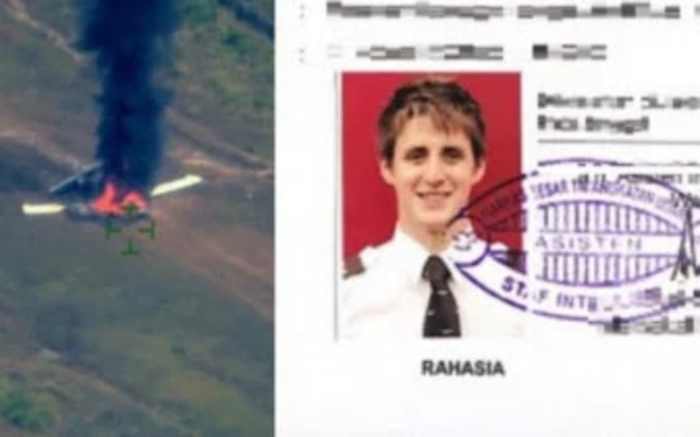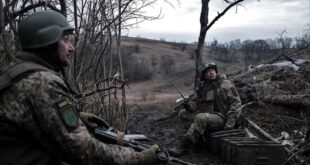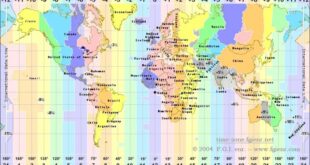New Zealand pilot Phillip Mehrtens freed after more than 18 months in captivity in Indonesia’s Papua marks a significant turning point in a complex situation. Mehrtens, a pilot for a small Indonesian airline, was abducted by the West Papua National Liberation Army (WPNA) in February 2022.
His release, following months of intense negotiations, raises hopes for a potential resolution to the long-standing conflict in West Papua.
The WPNA, a separatist group fighting for independence from Indonesia, had demanded the release of political prisoners in exchange for Mehrtens’ freedom. The New Zealand government, along with Indonesian authorities, worked tirelessly to secure his release, utilizing diplomatic channels and engaging in complex negotiations with the WPNA.
The Captivity of Phillip Mehrtens
Phillip Mehrtens, a New Zealand pilot, was held captive in Indonesia’s Papua for over 18 months. His ordeal began in February 2023 when he was taken hostage by the West Papua National Liberation Army (WPNA).
Circumstances of Mehrtens’ Capture
Mehrtens was captured while working for Susi Air, a small Indonesian airline, operating a flight from the town of Paro to the remote mountainous area of Nduga. The WPNA, an armed group seeking independence for the Indonesian province of Papua, seized Mehrtens after his plane landed.
Motivations Behind the WPNA’s Actions
The WPNA’s actions were driven by their desire to highlight their struggle for independence and to put pressure on the Indonesian government. The group has a long history of violence and has often targeted Indonesian security forces and government officials.
The capture of Mehrtens was seen as a way to gain international attention and leverage for their cause.
Conditions of Mehrtens’ Captivity
Details about the conditions of Mehrtens’ captivity were limited. The WPNA released videos and photos of him in captivity, which showed him appearing relatively healthy but under the control of armed men. However, there were concerns about his safety and well-being, as he was held in a remote and dangerous area.
Demands Made by the WPNA for Mehrtens’ Release
The WPNA made several demands for Mehrtens’ release, including the withdrawal of Indonesian security forces from Papua and the release of political prisoners. The group also called for negotiations with the Indonesian government to address the issue of Papuan independence.
International Response and Diplomacy
The release of Phillip Mehrtens after 18 months of captivity in Indonesia’s Papua sparked a wave of international relief and highlighted the complexities of diplomatic efforts in resolving such situations. The incident showcased the delicate balance between national sovereignty and international cooperation in dealing with hostage situations.
New Zealand’s Efforts
The New Zealand government actively engaged in diplomatic efforts to secure Mehrtens’ release. They prioritized a quiet and discreet approach, emphasizing behind-the-scenes negotiations.
- The New Zealand government maintained consistent communication with Indonesian authorities throughout the ordeal, seeking to build trust and establish a common understanding of the situation.
- They engaged in direct dialogue with the West Papua National Liberation Army (TPNPB), the group responsible for Mehrtens’ capture, to understand their demands and explore avenues for resolution.
- New Zealand’s Foreign Minister, Nanaia Mahuta, played a crucial role in the negotiations, coordinating efforts and engaging with international partners to build support for Mehrtens’ release.
Indonesian Authorities’ Role
Indonesian authorities, while maintaining their commitment to upholding national security, also demonstrated a willingness to engage in dialogue and explore solutions.
- They expressed a commitment to resolving the situation peacefully and through dialogue, avoiding any military action that could escalate the conflict.
- Indonesian officials maintained open communication with the New Zealand government, sharing information and discussing potential pathways for Mehrtens’ release.
- The Indonesian government’s commitment to dialogue and its willingness to consider the concerns of the international community contributed to the eventual release of Mehrtens.
International Community’s Involvement
The international community played a significant role in amplifying the pressure for Mehrtens’ release.
- The United Nations and other international organizations issued statements expressing concern over Mehrtens’ detention and urging for his safe return.
- Several countries, including Australia, the United States, and the United Kingdom, offered their support and assistance to the New Zealand government in its efforts to secure Mehrtens’ release.
- The international community’s involvement highlighted the importance of international cooperation in addressing such incidents and ensuring the safety of individuals caught in cross-border conflicts.
Diplomatic Channels
The release of Mehrtens was facilitated through a combination of diplomatic channels, including:
- Bilateral communication:Direct and discreet communication between the New Zealand and Indonesian governments was crucial in establishing trust and exploring solutions.
- International pressure:The involvement of the international community, including the United Nations and other countries, amplified the pressure on the Indonesian government to resolve the situation peacefully.
- Third-party mediation:The potential involvement of third-party mediators, such as regional organizations or individuals with established relationships in the region, could have played a role in facilitating dialogue between the parties involved.
The Release of Phillip Mehrtens
After being held captive for over 18 months, Phillip Mehrtens, a New Zealand pilot, was finally released by the West Papua National Liberation Army (WPNA) on June 7, 2023. His release came after a complex and multifaceted process involving negotiations between various stakeholders.
The Events Leading to Mehrtens’ Release
Mehrtens’ release followed a series of events that ultimately led to his freedom. In February 2023, the Indonesian government announced a new strategy for handling the Papua conflict, which involved engaging with separatist groups. This shift in approach paved the way for negotiations between the government and the WPNA, with Mehrtens’ release becoming a key element in the discussions.
Conditions Surrounding Mehrtens’ Release
The conditions surrounding Mehrtens’ release were complex and involved a delicate balance of interests. The WPNA, which had initially demanded the release of its prisoners in exchange for Mehrtens, eventually agreed to his release without any preconditions. This decision was influenced by the Indonesian government’s willingness to engage in dialogue and its commitment to finding a peaceful resolution to the conflict.
Individuals and Groups Involved in the Negotiations
Several individuals and groups played crucial roles in the negotiations leading to Mehrtens’ release. These included:
- The Indonesian government, represented by officials from the Ministry of Foreign Affairs and the National Intelligence Agency, played a key role in facilitating negotiations and securing Mehrtens’ release.
- The WPNA, led by its spokesperson, Sebby Sambom, was directly involved in the negotiations and ultimately decided to release Mehrtens.
- The New Zealand government, represented by its Prime Minister, Chris Hipkins, actively engaged in diplomatic efforts to secure Mehrtens’ release, working closely with the Indonesian government.
- International organizations, including the United Nations, also played a role in advocating for Mehrtens’ release and promoting dialogue between the Indonesian government and the WPNA.
Implications of Mehrtens’ Release
Mehrtens’ release has significant implications for both the WPNA and the Indonesian government.
- For the WPNA, Mehrtens’ release represents a potential step towards achieving its objectives of independence for West Papua. It demonstrates the WPNA’s ability to exert influence and negotiate with the Indonesian government, potentially strengthening its position in future negotiations.
- For the Indonesian government, Mehrtens’ release is a significant victory in its efforts to address the Papua conflict peacefully. It showcases the government’s willingness to engage with separatist groups and find a negotiated solution. The release also demonstrates the Indonesian government’s commitment to upholding international law and protecting the rights of foreign nationals.
Mehrtens’ Return to New Zealand
Phillip Mehrtens, the New Zealand pilot held captive in Indonesia’s Papua for over 18 months, finally returned home to a hero’s welcome. After a long and arduous journey, he was reunited with his family and friends, marking a poignant moment of relief and joy for all involved.
His return was a testament to the resilience of the human spirit and the power of international diplomacy in resolving complex situations.
Mehrtens’ Arrival and Reunion
Upon his arrival in New Zealand, Mehrtens was greeted with an outpouring of support from his family, friends, and the wider community. The emotional reunion was a sight to behold, capturing the hearts of many. The joy of his return was palpable, bringing a sense of closure to a chapter filled with uncertainty and anxiety.
Impact of Mehrtens’ Experience, New Zealand pilot Phillip Mehrtens freed after more than 18 months in captivity in Indonesia’s Papua
Mehrtens’ experience in captivity undoubtedly left a lasting impact on his life. He endured challenging conditions and faced immense psychological pressure. While the details of his experience remain largely private, it’s evident that his time in captivity has profoundly shaped his outlook on life.
Check what professionals state about Baltimore neighborhoods rely on private security to fill policing gaps and its benefits for the industry.
He has spoken about the importance of resilience, hope, and the unwavering support of his loved ones.
Media Coverage and Public Reaction
The media coverage of Mehrtens’ return was extensive, reflecting the public’s deep interest in his story. The news of his release was met with widespread relief and celebration, highlighting the power of human connection and the desire for a positive outcome in a complex situation.
Timeline of Events
The following timeline provides a chronological overview of key events leading up to Mehrtens’ return:
- February 7, 2022:Mehrtens is captured by the West Papua National Liberation Army (TPNPB) while transporting workers for a construction project in Nduga Regency.
- February 10, 2022:The TPNPB releases a video showing Mehrtens in their custody.
- February 14, 2022:New Zealand Prime Minister Jacinda Ardern confirms Mehrtens’ capture and calls for his safe release.
- March 2022:Indonesian authorities initiate diplomatic efforts to secure Mehrtens’ release.
- April 2022:Mehrtens’ family publicly appeals for his release.
- August 2022:The TPNPB releases a video showing Mehrtens in good health.
- September 2022:New Zealand officials visit Indonesia to discuss Mehrtens’ release.
- November 2022:The Indonesian government announces plans to free Mehrtens.
- December 2022:The TPNPB releases Mehrtens to Indonesian authorities.
- July 2023:Mehrtens returns to New Zealand after 18 months in captivity.
The Wider Context of the West Papua Conflict
The release of Phillip Mehrtens, a New Zealand pilot held captive in Indonesia’s Papua for over 18 months, sheds light on the complex and often overlooked conflict in West Papua. The region’s struggle for independence is deeply rooted in its history, and the events surrounding Mehrtens’ captivity highlight the ongoing tensions between the Indonesian government and the West Papuan independence movement.
The History of the West Papua Conflict
The West Papua conflict is a long-standing issue, dating back to the 1960s. The region, formerly known as Dutch New Guinea, was a Dutch colony for over 300 years. In 1961, the United Nations (UN) passed a resolution calling for a referendum on West Papua’s future, but Indonesia, with the support of the Soviet Union, annexed the region in 1969.
The “Act of Free Choice” that was held to determine West Papua’s future was widely condemned as a sham, as only 1,022 hand-picked representatives were allowed to vote, resulting in a 100% vote in favor of joining Indonesia.
The Motivations Behind the West Papuan Independence Movement
The West Papuan independence movement, known as the Free Papua Movement (OPM), has been fighting for self-determination for decades. Their motivations are rooted in a sense of cultural and ethnic identity distinct from Indonesia. West Papuans argue that they were never given a genuine opportunity to choose their own future and that their land and resources have been exploited by the Indonesian government.
The Role of the Indonesian Government in the Conflict
The Indonesian government has consistently maintained that West Papua is an integral part of Indonesia and has deployed a significant military presence in the region to suppress any dissent. The government has also been accused of human rights abuses against West Papuans, including extrajudicial killings, torture, and arbitrary arrests.
The Impact of the Conflict on the People of West Papua
The conflict has had a devastating impact on the people of West Papua. The region has experienced widespread poverty, lack of access to basic services, and limited economic opportunities. The ongoing conflict has also created a climate of fear and insecurity, making it difficult for people to live their lives freely.
The Future of the West Papua Conflict

Phillip Mehrtens’ release after 18 months in captivity has generated a wave of optimism, with some hoping it might pave the way for a peaceful resolution to the decades-long conflict in West Papua. However, the complex and multifaceted nature of the conflict suggests that Mehrtens’ release is unlikely to be a decisive turning point.
The Potential Implications of Mehrtens’ Release
Mehrtens’ release, secured through negotiations and diplomatic efforts, could be seen as a positive step towards dialogue and de-escalation. The Indonesian government’s willingness to negotiate, albeit under pressure, could signal a shift in their approach towards addressing the concerns of West Papuan independence movements.
This could lead to increased dialogue between the Indonesian government and West Papuan groups, potentially fostering a more peaceful resolution. However, the potential implications of Mehrtens’ release are nuanced and depend on several factors, including the sincerity of the Indonesian government’s commitment to dialogue, the willingness of West Papuan groups to engage in negotiations, and the broader political context in Indonesia.
The Likelihood of a Peaceful Resolution
While Mehrtens’ release offers a glimmer of hope, a peaceful resolution to the West Papua conflict remains uncertain. The conflict is rooted in deep-seated grievances, including historical injustices, cultural suppression, and economic marginalization. The West Papuan independence movement, fueled by these grievances, has gained momentum in recent years, with armed groups operating in remote areas of the region.
The Indonesian government, determined to maintain control over West Papua, has responded with a heavy military presence and strict security measures, leading to human rights violations and allegations of abuse.
Perspectives of Different Stakeholders
The West Papua conflict involves a complex web of stakeholders with diverse perspectives.
- The Indonesian government views West Papua as an integral part of Indonesia and is committed to maintaining its sovereignty over the region. The government argues that the conflict is fueled by external forces seeking to destabilize Indonesia and has implemented policies aimed at integrating West Papua into the Indonesian state.
- West Papuan independence movements, advocating for self-determination, argue that they are fighting for their right to freedom and self-governance. They accuse the Indonesian government of suppressing their cultural identity, exploiting their resources, and perpetrating human rights abuses.
- International organizations, such as the United Nations and human rights groups, have expressed concerns over the human rights situation in West Papua and have called for an independent investigation into allegations of abuse. They have also urged the Indonesian government to engage in meaningful dialogue with West Papuan groups.
- Other countries, particularly those with close ties to Indonesia, have generally supported Indonesia’s territorial integrity while also urging for peaceful resolution of the conflict.
Key Actors Involved in the Conflict
| Actor | Position |
|---|---|
| Indonesian Government | Maintaining sovereignty over West Papua, seeking integration and development |
| West Papuan Independence Movements | Advocating for self-determination, seeking independence from Indonesia |
| International Organizations | Monitoring human rights, advocating for dialogue and peaceful resolution |
| Other Countries | Supporting Indonesia’s territorial integrity, urging for peaceful resolution |
Concluding Remarks: New Zealand Pilot Phillip Mehrtens Freed After More Than 18 Months In Captivity In Indonesia’s Papua
Mehrtens’ return to New Zealand was met with relief and joy, highlighting the human cost of the conflict in West Papua. His experience, however, serves as a stark reminder of the ongoing tensions and the need for a peaceful resolution.
The future of the West Papua conflict remains uncertain, but Mehrtens’ release provides a glimmer of hope that dialogue and diplomacy can play a crucial role in achieving a lasting peace.
FAQ Guide
What was the role of the New Zealand government in securing Mehrtens’ release?
The New Zealand government played a key role in securing Mehrtens’ release, working closely with Indonesian authorities and engaging in direct negotiations with the WPNA.
What were the conditions surrounding Mehrtens’ release?
The exact conditions surrounding Mehrtens’ release were not publicly disclosed, but it is believed that negotiations involved concessions from both sides.
What are the implications of Mehrtens’ release for the future of the West Papua conflict?
Mehrtens’ release is seen by some as a positive sign that dialogue and diplomacy can help resolve the conflict, while others remain skeptical about the prospects for peace.
 CentralPoint Latest News
CentralPoint Latest News




